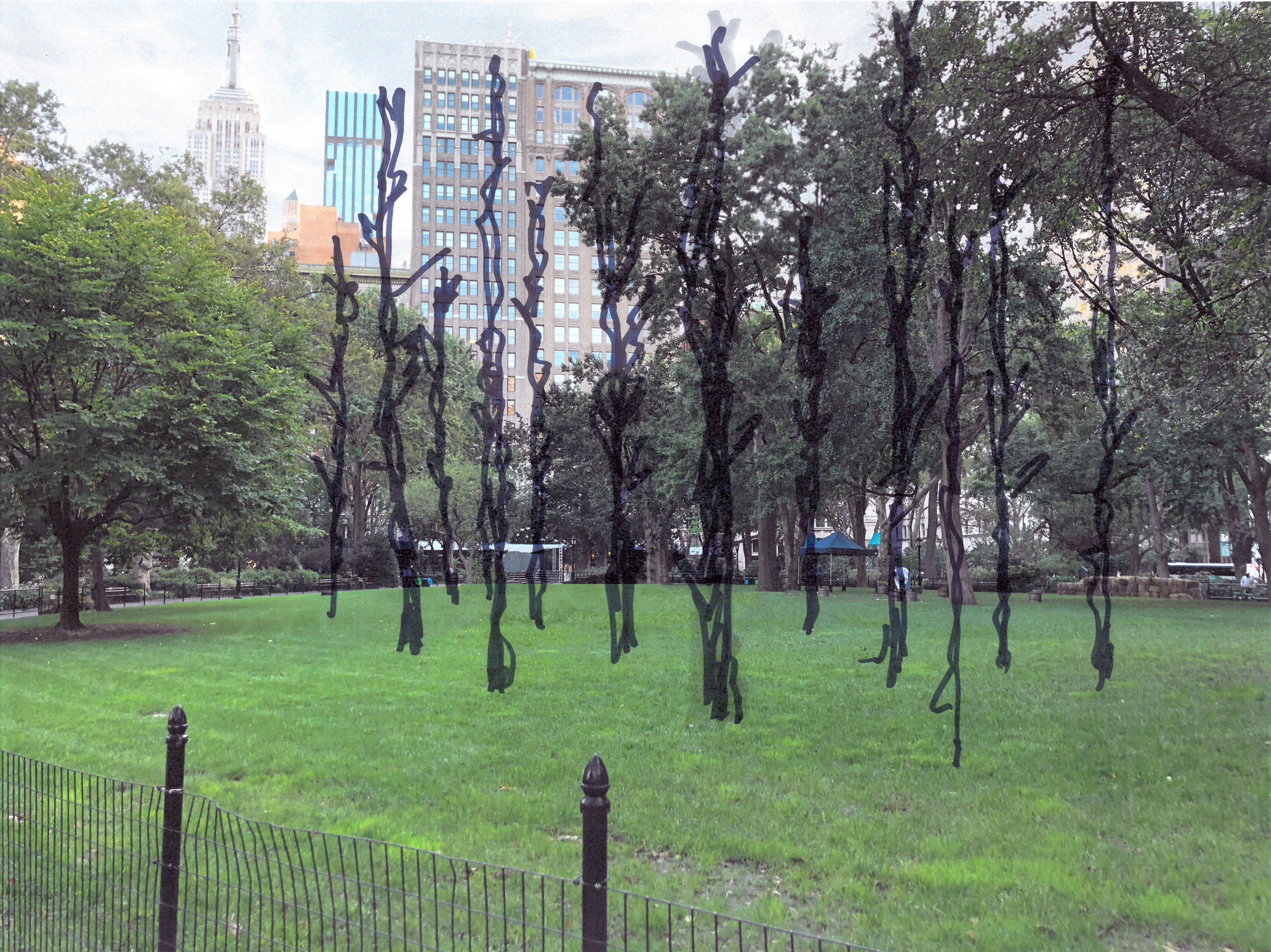
Visitors to Manhattan’s Madison Square Park next June will encounter a curious sight. There, the artist Maya Lin will be presenting a small grove of sky-scraping cedar trees–some standing nearly 30 feet tall–which formerly lived in the wilderness of New Jersey’s Pine Barrens until Hurricane Sandy tore through the area.
The installation is called Ghost Forest, a term used to describe vast acreages of woodland that have died out–often due to rising sea tides, which overwhelm forests near estuaries with saltwater, choking out their ability to get nutrients from the earth. In 2012, Sandy caused seawater levels to surge, leaving swaths of ghost forests in its wake.
“Maya brings her vision as an artist and her work as an environmental activist to this project,” says Brooke Kamin Rapaport, the deputy director and chief curator of Madison Square Park Conservancy, the project’s organizing body. “She wanted to focus on nature and on the environment. Where she lives in Colorado [there] are vast stands of trees that have died off due to insects that are thriving in warmer climes.” By moving an East Coast ghost forest into a vibrant, living park, Lin wants to send “a powerful reminder of the ravages of climate change,” Rapaport says.
Maya Lin Portrait © Jesse Frohman, courtesy of the artist.
Lin has spent her long career making work that transforms or responds to landscapes, and she’s no stranger to climate change advocacy. Though she may be best known for the Vietnam Memorial that she created when she was 21, the now-60-year-old artist’s 2006 “Bodies of Water” series called attention to pollution in the Black Sea, the Caspian Sea, and the Red Sea. And in 2010, she developed the What Is Missing? Foundation, with a website that acts as a virtual “memorial” to what has already been lost to climate change.
Ghost Forest is similarly elegiac. “[The installation] will be visually compelling–the grove of tall ghostly trees are apparitions conjuring a vibrant, verdant past–and they will stand in contrast to the Park’s lush horticulture,” says Rapaport. “It is a stark comparison and a cautionary warning, a call to action for the 60,000 people who daily pass through Madison Square Park. As well, we plan to work with Maya on public programs that focus on potential nature-based solutions to climate change.”
Madison Square Park Conservancy has been staging exhibitions by the likes of Anthony Gormley, Diana Al-Hadid, Martin Puryear, and Alison Saar since 2004; the group is presenting Lin’s forest as their landmark 40th project.
“During that morning hustle to work or to school, to an appointment or to the subway, how can people not stop dead in their tracks to take in the magnitude of this work?” Rapaport ponders. “Lin summons the legacy of 1960s and 1970s Land Art and Earthworks. But rather than confronting the space of the vast American West, a half-century later she’s installing monumental, desiccated trees in an urban park–a specter that portends the future.”
“Ghost Forest” will be on view from June 8, 2020 through December 13, 2020.